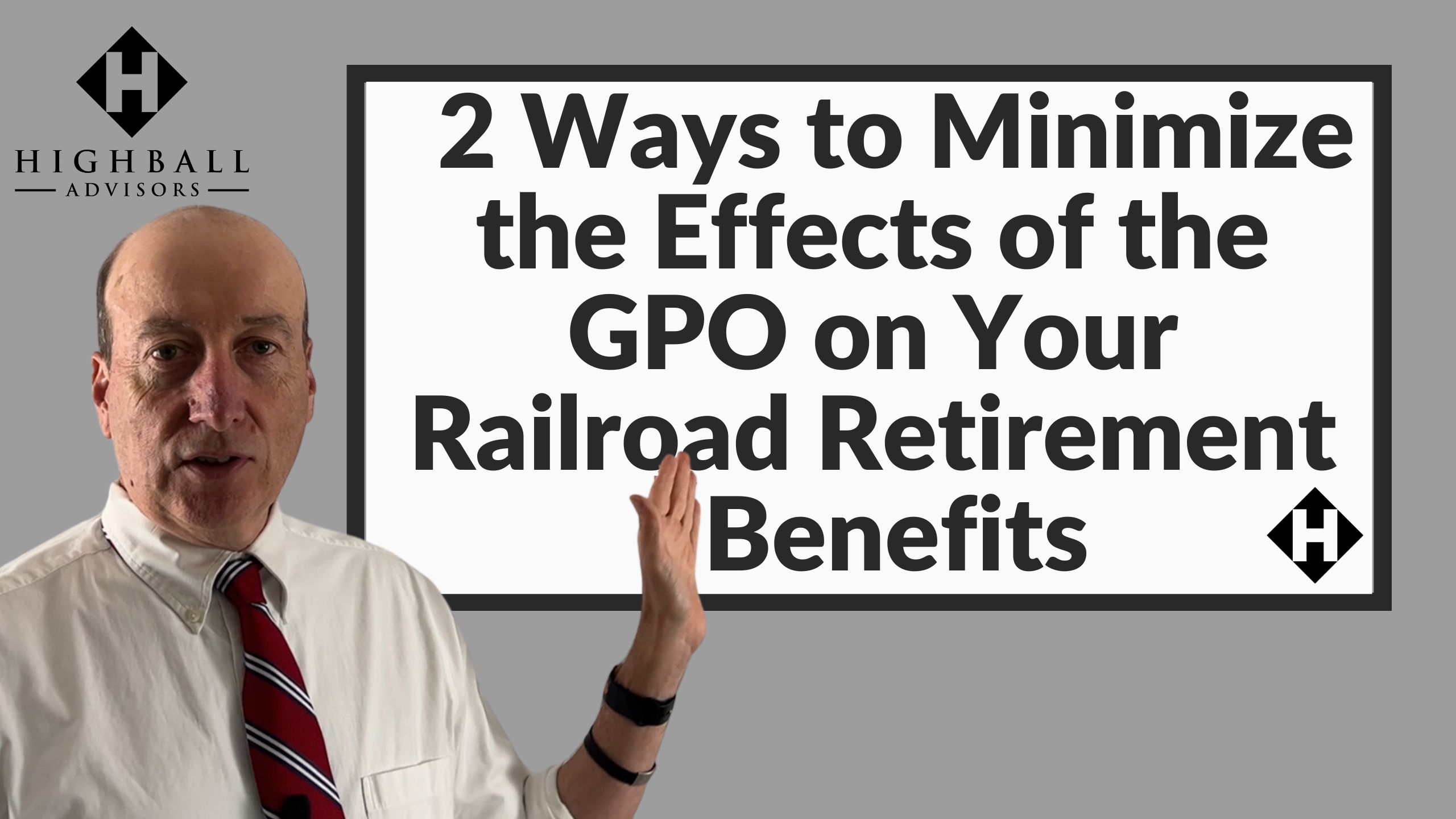
2 Ways to Minimize the Effect of the GPO on Your Railroad Retirement Benefits
Tier 1 Tier 2 Video Spouse Annuity Retirement Financial PlanningTranscript:
Is that government pension you're getting affecting your railroad retirement?
Welcome everyone to another edition of the Highball Advisors Railroad Retirement Whiteboard. My name's John McNamara of Highball Advisors, and today we're going to talk about GPO, otherwise known as government pension offset.
So what is that? Okay, so what we're talking about is normally the spouses of railroaders, let's say they've worked in a position where they're entitled to a pension, particularly a government pension. So that would what would be called non-covered. So they're getting a pension from a government, maybe as a teacher, firefighter, policeman, those typical jobs there and they never paid into social security. So that's a non-covered position.
So now when they turn around to collect their spousal benefit from the railroad retirement, there's going to be an offset, a government pension offset. It only affects the tier one portion of the annuity. So it can reduce the spouse and survivor benefits by two thirds of a pension from a non-covered position. So very, very important there for the spouses, and then possibly if they're the remaining spouse, that turns into a survivor benefit. So you really have to understand the reduction that could possibly come from this.
So there's two ways that you can reduce the government pension offset. Now, when I go through this, you're going to go the second one's ridiculous, John. It kind of is, but there are tactically two ways to do it. So really the first one is the most likely way to do it. The other one, you got to do the math on it, to be honest with you.
So it's called the last 60 month rule, the first option here. So you're in this non-covered position, let's say teacher, and you're not paying into social security. Maybe you've got your 25 years and you retire at 50 or something like that. But we'll just say that the teacher's a female, and let's say your husband's still working for the railroad. Say well, he's not going to retire for another five years or something. So what you can do is in that non-covered position, then you can switch and go work five more years in a covered position. So let's say go work at a Home Depot or a... I always say Home Depot. Or a Starbucks something for 60 months, and that's a covered position and that gets rid of the government pension offset. So that's the 60 month rule right there.
So that's something to think about if you wanted to get rid of that reduction, because if you're getting a good sizable pension, your spousal annuity tier one portion's just going to go away because you're never paid into it. So really crunch the numbers on that. That might be a good option there.
Then the second one is hey, I can just... You're working for somebody who's not paying social security and offers you a pension, you say, ah no, I don't want the pension. I'll just pay into social security and do my own investing. So I don't get that one, but I'm just saying you can technically do that, is withdraw from the pension. If you're going to do that really, really, really crunch the numbers on that. So yeah, that's very, very important.
In addition, I just want to bring up for on a survivor aspect. So let's say, going back to this, the wife was a teacher and she had a non-covered pension, and you have the government pension offset. Now let's say, if she predeceases the railroader and then this pension might come over to him, there is no government pension offset on that anymore. So just to let you know on that. So that's an important thing to also think about. That kind of goes away also.
So I hope you found this helpful. If you're at or near retirement and you have one of these pensions and you want to understand how all that stuff works, reach out to me. Go through my boarding for railroad retirement process and we'll go deep into this stuff here. So I hope you found this helpful. Click on the notification bell to get the latest video, subscribe to the channel to appreciate, share the channel. Growing great. I think I'm up over 6,000 subscribers or close to it. So that's good stuff. Until next time everyone, please stay safe, stay on track, and take care. So long everybody. Bye.
Get Free Railroad Retirement Assessment
Disclaimer: This article is provided for general information and illustration purposes only. Nothing contained in the material constitutes tax advice, a recommendation for purchase or sale of any security, or investment advisory services. Highball Advisors encourages you to consult a financial planner, accountant, and/or legal counsel for advice specific to your situation. Reproduction of this material is prohibited without written permission from Highball Advisors, and all rights are reserved from Highball Advisors, and all rights are reserved.
